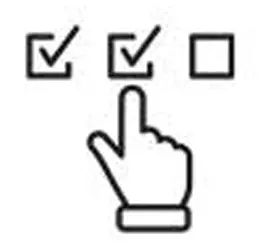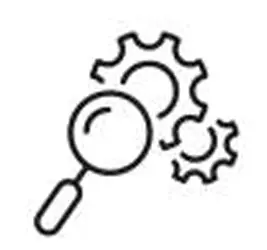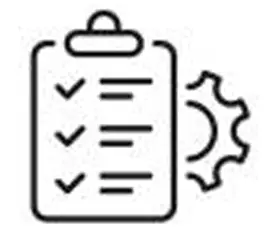자유글 분류
10 Tips For Assessing Mental Health That Are Unexpected
작성자 정보
- Deana 작성
- 작성일
본문
mental health assessment Health Tools for Assessing Mental Health
A mental health assessment tool must be simple to use and mental health assessment provide real-time information. It should assist practitioners in identifying the initial areas of focus with their patients.
 Written tests can be included in mental health assessments. These are typically in the form of a questionnaire and can be completed by the patient themselves.
Written tests can be included in mental health assessments. These are typically in the form of a questionnaire and can be completed by the patient themselves.
Psychological tests test your ability to reason, remember and think. A doctor can also use the test to detect hallucinations.
Interviews
Psychiatric interviewing is a crucial component of the diagnostic process. A mental health professional will ask you questions regarding your symptoms, and how they impact your daily life. These can include questions about your family friends, work, and family. The interviewer could also inquire about experiences from the past that have affected your mental health. They will then use this information to make an assessment. The interview is an essential step in the psychiatric evaluation process and shouldn't be skipped.
Qualitative research conducted with people who have mental health problems has found that many factors contribute to the quality of life. These include symptoms like depression, lack energy and motivation, as well as troubling symptoms like hallucinations or paranoia. Many of the interviewees said that their issues had a negative impact on their ability to achieve their potential, particularly at work. This is consistent with the capabilities approach to quality of life which is based on a set of 'functions' that define a person's capabilities: choice and control as well as self-perception; relationships and belonging; activity and motivation.
Interviews can be used to determine whether someone suffers from mental illness, for instance obsessive-compulsive disorder (OCD). These interviews are typically short and can be conducted over the telephone. The interviewer is likely to keep notes during your conversation and may use a checklist to identify the symptoms you are experiencing. A clinical diagnostic interview is typically conducted by a mental health professional who is familiar with the Diagnostic and Statistical Manual of Mental Disorders.
A therapist should avoid using techniques for behavioral interviewing that ask closed-ended questions about how often you've used de-escalation techniques or if you've completed a course in crisis management. These kinds of questions could give the impression that you're evaluating someone's performance based on how they follow a written script instead of their abilities to respond in real-life situations.
It's important to keep in mind that interviews can be difficult for everyone, but particularly for those who suffer from mental health issues. Interviewees are often reluctant to discuss their health issues because they fear that their symptoms won't be taken seriously. The interviewer should be sensitive and understanding. Therapists should also try to avoid making stereotyped assumptions about the kind of person with specific disorders.
Physical Exam
Physical examinations are an essential part of assessing the mental health of patients. It allows a physician to observe how the patient appears, feels and behaves. It should be carried out by a qualified psychiatrist, psychologist or psychiatric nurse. psychiatrist. A thorough understanding of internal medicine, systemic inquiry and medical history can help focus the physical exam. You require privacy, peace warm, light, and adequate equipment.
The majority of patients with psychiatric problems suffer from medical comorbidities. A lack of a physical examination can result in missing opportunities to diagnose and treat them. Undiagnosed physical ailments can cause or worsen psychiatric issues (e.g. hypothyroidism or diabetic ketoacidosis). Additionally, some of the symptoms and signs of psychiatric disorder are themselves medically significant (eg, weight loss due to anorexia, or low appetite in psychosis).
Inpatient wards typically lack facilities for conducting an entire physical health exam. It is often difficult to conduct an examination on patients who are agitated or confused. However, there is no evidence to suggest that a thorough examination can not be conducted in psychiatric wards. A snapshot audit that was conducted in a psychiatric facility discovered that the trust guidelines and recommendations of The Royal College of Psychiatrists on physical health assessments are not being followed. Only 78 of 111 admissions to inpatients had a thorough physical health examination. A brief presentation was presented and an established form for psychiatric hospital physical examinations was introduced. Grand rounds and meetings with residents were also used to remind residents of the importance of physical examinations.
A psychiatric or psychological examination can be used to establish an assessment of the particular aspects of disability or functioning, often in relation to the school environment; to assist with legal issues such as custody issues or competence to be a witness in a trial; and for training or employment purposes. The typical assessment consists of an interview with the person being evaluated and written or verbal tests. The test can last from 30 minutes to 90 minutes, or even longer if more in-depth tests are needed. Patients being evaluated for mental health problems may be required to keep a diary or diary of their symptoms and behaviors during the past few days.
Tests
Psychological testing is used to collect more information than what can be gathered through interviews or observation. Psychologists can use a variety of tests and assessments to pinpoint possible diagnoses and assess the response of a patient to treatment.
Standardized questionnaires, rating scales, and other instruments help patients describe their symptoms to mental health professionals are able to easily understand them. These instruments are used to identify common disorders like anxiety, depression and PTSD. These tools can also be used to determine the severity of an illness at any point in time.
In addition to identifying issues Certain assessments tools can also be helpful for determining the overall level of functioning in specific areas like mood, memory, concentration and personality. Comparing and the two functions can help practitioners better understand the impact of mental illness on a person's daily routine.
Many people are worried about failing an assessment of their psychological health and are tempted to examine the results prior to the actual test. But, it's better to wait until the psychologist or therapist has provided you with all the information and explanations that you require. The purpose of the assessment is to provide you with the best treatment for your unique situation.
In the process of assessing it is important to remember that there's no "right or wrong answer." Each person has strengths and weaknesses in their emotional and cognitive capabilities. The results of a psychological test can provide people with valuable insight as to how they can utilize their strengths and overcome any documented weaknesses.
Some clients are hesitant to seek help with mental health issues because of fear of embarrassment or a stigmatizing perception held by others within their social circle. This tool can be a helpful method to help them recognize some dangers of mental health stigma and provide suggestions for ways to reduce the misperception about their need for therapy. This worksheet can be used by Quenza practitioners as a introductory exercise for their sessions with clients or modified to be used at any stage of the therapeutic process.
Checklists
A checklist is an aid that assists a user during an evaluation. It can be used to determine the mental health of a patient and offer guidance for appropriate action. This is a vital step to safeguard both the individual and others. It also helps ensure that the patient receives the treatment they need. It is also a way to determine risk and decide what additional steps should be taken.
Psychiatric assessments often require screening tools, such as rating scales or questionnaires, to determine the presence of symptoms. These tools are especially useful for patients who might not be aware of or have the words to describe their symptoms. These tests can also be helpful in identifying family medical history of mental illness. Other types of psychiatric assessment are designed to help patients comprehend their symptoms and the impact they have on them. These include symptom-based assessments as well as mood-state ratings scales.
In addition to using a checklist, law enforcement officers can also benefit from the incorporation of CIT training and available resources. They can assist them in resolving dangerous situations in a safe and effective manner. They can also assist in develop partnerships with local communities who deal with mental health. The existence of these partnerships can lessen the stigma that surrounds people with mental illnesses and can increase public trust in police departments.
The development of a checklist to assess mental health assessment private health is a valuable tool for federal employees. In a recent study, 85% of federal employees said that behavioral healthcare benefits were more beneficial than other benefits offered by the workplace. The current system is not efficient, Mental Health Assessment and does not permit the identification of high-risk employees. The Centre is taking action to address these issues by integrating harassment, mental health, and violence into its integrated plan for workplace wellness.
In the first phase a draft check list was created through research into the literature and discussions with focus groups. The checklist was then pilot-tested and analyzed by a team of clinicians. After the discussion the checklist was expanded to include four items (endangerment to self, interactions, and other diagnoses) and two items were eliminated and three other items were modified. This was to ensure that the checklist was accurate and had a high rate of inter-rater reliability.
A mental health assessment tool must be simple to use and mental health assessment provide real-time information. It should assist practitioners in identifying the initial areas of focus with their patients.
 Written tests can be included in mental health assessments. These are typically in the form of a questionnaire and can be completed by the patient themselves.
Written tests can be included in mental health assessments. These are typically in the form of a questionnaire and can be completed by the patient themselves.Psychological tests test your ability to reason, remember and think. A doctor can also use the test to detect hallucinations.
Interviews
Psychiatric interviewing is a crucial component of the diagnostic process. A mental health professional will ask you questions regarding your symptoms, and how they impact your daily life. These can include questions about your family friends, work, and family. The interviewer could also inquire about experiences from the past that have affected your mental health. They will then use this information to make an assessment. The interview is an essential step in the psychiatric evaluation process and shouldn't be skipped.
Qualitative research conducted with people who have mental health problems has found that many factors contribute to the quality of life. These include symptoms like depression, lack energy and motivation, as well as troubling symptoms like hallucinations or paranoia. Many of the interviewees said that their issues had a negative impact on their ability to achieve their potential, particularly at work. This is consistent with the capabilities approach to quality of life which is based on a set of 'functions' that define a person's capabilities: choice and control as well as self-perception; relationships and belonging; activity and motivation.
Interviews can be used to determine whether someone suffers from mental illness, for instance obsessive-compulsive disorder (OCD). These interviews are typically short and can be conducted over the telephone. The interviewer is likely to keep notes during your conversation and may use a checklist to identify the symptoms you are experiencing. A clinical diagnostic interview is typically conducted by a mental health professional who is familiar with the Diagnostic and Statistical Manual of Mental Disorders.
A therapist should avoid using techniques for behavioral interviewing that ask closed-ended questions about how often you've used de-escalation techniques or if you've completed a course in crisis management. These kinds of questions could give the impression that you're evaluating someone's performance based on how they follow a written script instead of their abilities to respond in real-life situations.
It's important to keep in mind that interviews can be difficult for everyone, but particularly for those who suffer from mental health issues. Interviewees are often reluctant to discuss their health issues because they fear that their symptoms won't be taken seriously. The interviewer should be sensitive and understanding. Therapists should also try to avoid making stereotyped assumptions about the kind of person with specific disorders.
Physical Exam
Physical examinations are an essential part of assessing the mental health of patients. It allows a physician to observe how the patient appears, feels and behaves. It should be carried out by a qualified psychiatrist, psychologist or psychiatric nurse. psychiatrist. A thorough understanding of internal medicine, systemic inquiry and medical history can help focus the physical exam. You require privacy, peace warm, light, and adequate equipment.
The majority of patients with psychiatric problems suffer from medical comorbidities. A lack of a physical examination can result in missing opportunities to diagnose and treat them. Undiagnosed physical ailments can cause or worsen psychiatric issues (e.g. hypothyroidism or diabetic ketoacidosis). Additionally, some of the symptoms and signs of psychiatric disorder are themselves medically significant (eg, weight loss due to anorexia, or low appetite in psychosis).
Inpatient wards typically lack facilities for conducting an entire physical health exam. It is often difficult to conduct an examination on patients who are agitated or confused. However, there is no evidence to suggest that a thorough examination can not be conducted in psychiatric wards. A snapshot audit that was conducted in a psychiatric facility discovered that the trust guidelines and recommendations of The Royal College of Psychiatrists on physical health assessments are not being followed. Only 78 of 111 admissions to inpatients had a thorough physical health examination. A brief presentation was presented and an established form for psychiatric hospital physical examinations was introduced. Grand rounds and meetings with residents were also used to remind residents of the importance of physical examinations.
A psychiatric or psychological examination can be used to establish an assessment of the particular aspects of disability or functioning, often in relation to the school environment; to assist with legal issues such as custody issues or competence to be a witness in a trial; and for training or employment purposes. The typical assessment consists of an interview with the person being evaluated and written or verbal tests. The test can last from 30 minutes to 90 minutes, or even longer if more in-depth tests are needed. Patients being evaluated for mental health problems may be required to keep a diary or diary of their symptoms and behaviors during the past few days.
Tests
Psychological testing is used to collect more information than what can be gathered through interviews or observation. Psychologists can use a variety of tests and assessments to pinpoint possible diagnoses and assess the response of a patient to treatment.
Standardized questionnaires, rating scales, and other instruments help patients describe their symptoms to mental health professionals are able to easily understand them. These instruments are used to identify common disorders like anxiety, depression and PTSD. These tools can also be used to determine the severity of an illness at any point in time.
In addition to identifying issues Certain assessments tools can also be helpful for determining the overall level of functioning in specific areas like mood, memory, concentration and personality. Comparing and the two functions can help practitioners better understand the impact of mental illness on a person's daily routine.
Many people are worried about failing an assessment of their psychological health and are tempted to examine the results prior to the actual test. But, it's better to wait until the psychologist or therapist has provided you with all the information and explanations that you require. The purpose of the assessment is to provide you with the best treatment for your unique situation.
In the process of assessing it is important to remember that there's no "right or wrong answer." Each person has strengths and weaknesses in their emotional and cognitive capabilities. The results of a psychological test can provide people with valuable insight as to how they can utilize their strengths and overcome any documented weaknesses.
Some clients are hesitant to seek help with mental health issues because of fear of embarrassment or a stigmatizing perception held by others within their social circle. This tool can be a helpful method to help them recognize some dangers of mental health stigma and provide suggestions for ways to reduce the misperception about their need for therapy. This worksheet can be used by Quenza practitioners as a introductory exercise for their sessions with clients or modified to be used at any stage of the therapeutic process.
Checklists
A checklist is an aid that assists a user during an evaluation. It can be used to determine the mental health of a patient and offer guidance for appropriate action. This is a vital step to safeguard both the individual and others. It also helps ensure that the patient receives the treatment they need. It is also a way to determine risk and decide what additional steps should be taken.
Psychiatric assessments often require screening tools, such as rating scales or questionnaires, to determine the presence of symptoms. These tools are especially useful for patients who might not be aware of or have the words to describe their symptoms. These tests can also be helpful in identifying family medical history of mental illness. Other types of psychiatric assessment are designed to help patients comprehend their symptoms and the impact they have on them. These include symptom-based assessments as well as mood-state ratings scales.
In addition to using a checklist, law enforcement officers can also benefit from the incorporation of CIT training and available resources. They can assist them in resolving dangerous situations in a safe and effective manner. They can also assist in develop partnerships with local communities who deal with mental health. The existence of these partnerships can lessen the stigma that surrounds people with mental illnesses and can increase public trust in police departments.
The development of a checklist to assess mental health assessment private health is a valuable tool for federal employees. In a recent study, 85% of federal employees said that behavioral healthcare benefits were more beneficial than other benefits offered by the workplace. The current system is not efficient, Mental Health Assessment and does not permit the identification of high-risk employees. The Centre is taking action to address these issues by integrating harassment, mental health, and violence into its integrated plan for workplace wellness.
In the first phase a draft check list was created through research into the literature and discussions with focus groups. The checklist was then pilot-tested and analyzed by a team of clinicians. After the discussion the checklist was expanded to include four items (endangerment to self, interactions, and other diagnoses) and two items were eliminated and three other items were modified. This was to ensure that the checklist was accurate and had a high rate of inter-rater reliability.
관련자료
-
이전
-
다음
댓글 0
등록된 댓글이 없습니다.






